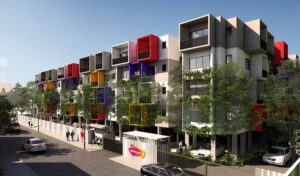
Harmonizing Technology with Lifestyle: The Path to a Luxurious Yet Grounded Existence
Harmonizing Technology with Lifestyle: The Path to a Luxurious Yet Grounded Existence In the grand

Preserving and Expanding Urban Green Spaces:
Bangalore takes pride in its legacy of lush green spaces, serving as sanctuaries amidst the concrete jungle. Parks like Cubbon Park and Lalbagh Botanical Garden are not only recreational hubs but also vital ecosystems, improving air quality, supporting biodiversity, and providing respite for residents. Recognizing their importance, the city has placed great emphasis on preserving and expanding urban green spaces. Projects like the Bangalore Lake Development Authority have rejuvenated lakes, transforming them into vibrant ecosystems and recreational areas. Similarly, the development of green belts and urban forests, such as Turahalli Forest and Bannerghatta National Park, further contributes to biodiversity conservation while offering a refuge from urban chaos.
Green Building Initiatives:
Bangalore has become a frontrunner in adopting sustainable construction practices, with a focus on green buildings. Developers are increasingly incorporating energy-efficient designs, water conservation measures, and waste management systems into their projects. The Leadership in Energy and Environmental Design (LEED) certification system has gained prominence, motivating builders to adhere to sustainable practices. Green buildings not only reduce carbon emissions and resource consumption but also provide healthier indoor environments for occupants.
Promoting Renewable Energy:
Bangalore has recognized the significance of renewable energy sources in combating climate change. The city has been actively promoting the use of solar power, both in residential and commercial sectors. Rooftop solar installations have gained momentum, harnessing the city’s ample sunlight for clean energy generation. These initiatives contribute to reduced reliance on fossil fuels and mitigate greenhouse gas emissions. Bangalore’s efforts in renewable energy have attracted investments and collaborations, positioning the city as a leader in sustainable development in India.
Green Transportation and Infrastructure:
To combat traffic congestion and air pollution, Bangalore has been investing in green transportation infrastructure. The introduction of an extensive metro rail network has not only improved commuting but also reduced vehicular emissions significantly. The city encourages cycling and walking by developing dedicated lanes and pedestrian-friendly streets, promoting sustainable modes of transportation. Initiatives like the Namma Metro and Non-Motorized Transport (NMT) corridors have enhanced connectivity while reducing the environmental impact of transportation.
Water Management and Conservation:
Bangalore, known for its abundant water bodies and lakes, has faced challenges such as water scarcity and pollution due to rapid urbanization. In response, the city has implemented measures to rejuvenate and conserve its water resources. Rainwater harvesting has been made mandatory for new buildings, ensuring the replenishment of groundwater and reducing dependence on municipal water supply. Additionally, wastewater treatment plants have been established to treat and reuse sewage water, mitigating water scarcity issues and improving overall water management.
Community Participation and Awareness:
The success of green infrastructure and sustainable development initiatives in Bangalore relies on community participation and awareness. Numerous organizations, environmental groups, and citizen-led initiatives are actively working to create awareness and mobilize communities to participate in greening initiatives. The Bangalore Agenda Task Force (BATF) and citizen-driven campaigns, such as “Namma Bengaluru, Namma Hemmeya Kannu” (Our Bengaluru, Our Green Eye), have been instrumental in fostering a sense of ownership and environmental stewardship among residents.
Conclusion:
As Bangalore continues to grow and urbanize, the implementation of green infrastructure and sustainable development practices has become imperative. Preserving and expanding urban green spaces, promoting green buildings, adopting renewable energy sources, investing in green transportation infrastructure, and emphasizing water management and conservation are all crucial steps towards creating a greener and more resilient city. Through community participation and awareness, Bangalore is fostering a culture of sustainability and paving the path to a greener future. By prioritizing green infrastructure and sustainable development, Bangalore can set an example for other cities in India and around the world, demonstrating that economic growth and environmental preservation can go hand in hand.

Harmonizing Technology with Lifestyle: The Path to a Luxurious Yet Grounded Existence In the grand

RERA: Revolutionizing the Indian Real Estate Landscape The Real Estate (Regulation and Development) Act, 2016

Conclusion In an era marked by rapid urbanization, gated communities stand out as havens of

© 2023 Axisconcept . All Rights Reserved